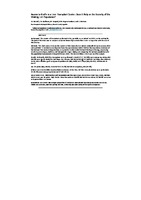Resumen:
Background: The number of transplants performed relies, partially, on recipients' variables on the waiting list. The goal of this study was to compare recipients from a high-volume liver center in Argentina with the rest of the country.
Methods: This study was a retrospective analysis of liver transplant recipients nationally between January 2013 and April 2017. It involved extracting data from the open database CRESI-SINTRA (the Argentinian database of the National Procurement Organization, an equivalent to the United Network for Organ Sharing); expressing results by percentages, medians, and interquartile ranges (IQRs); and comparing the national population with the population transplanted at Hospital El Cruce (HEC). The Mann-Whitney U test was used for analysis.
Results: Nationally, 1434 liver transplants were performed. A total of 177 (12.34%) were emergency status; 811 (56.6%) were by the Model for End-Stage Liver Disease (MELD) (n = 759)/PELD (Pediatric End-Stage Liver Disease) (n = 52), with a median graft assignment position of 5 (IQR, 3–10) in 57.2 days (IQR, 11–217). Median MELD access was 29 points (IQR, 24–33). A total of 446 (31.1%) had MELD exceptions; 249 (55.8%) of these were due to Milan hepatocellular carcinoma. At the HEC, 167 liver transplantations were performed; 26 (15.6%) were emergency status and 97 (58.1%) by MELD (none PELD). Their median graft assignment position was 4 (IQR, 4–16) in 19.1 days (IQR, 4–90); median MELD access was 28 points (IQR, 24–31). Forty-five patients (26.9%) had MELD exceptions; 31 (68.9%) were due to hepatocellular carcinoma.
Conclusions: Our center has a larger proportion of recipients transplanted by emergency status and MELD, similar MELD access, and less waiting list time, reflecting our wide policy of liver graft acceptance.
Descripción:
Fil: Daciuk, NI. Hospital de Alta Complejidad en Red El Cruce Dr. Néstor C. Kirchner. Unidad de Trasplante hepático y Cirugia hepatobiliar. Florencio Varela, Argentina.

